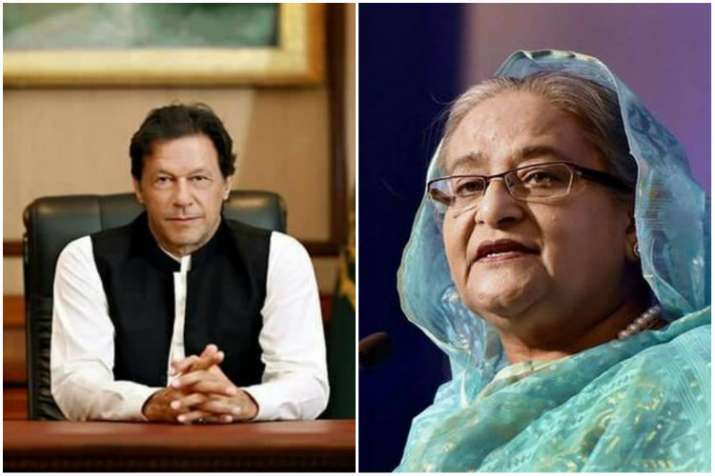Success is never achieved without sacrifice, dedication, and having a focused attitude towards attaining objectives. When Bangladesh emerged as an independent state in 1971, no one imagined it could survive economically, Henry Kissinger called her an international “basket case”! On the contrary it is now proven to be a successful country by developing herself across the board in human development index, exports, social progress, and fiscal prudence.
How can a country, so vulnerable to natural calamities, high in poverty rate, low trade and foreign-dependent economy, outperform its much larger, better-endowed neighbors India and Pakistan in most socio-economic indicators? 80% of its people lived below the poverty line in 1971, Pakistan was then 70% richer than the area which now constitutes Bangladesh. Today, Bangladesh is 45% richer than Pakistan. Bangladesh’s GDP per capita had surged by 9% over the past year, growing to $2,227 and Pakistan’s per capita income is lowest comparatively, at $1,543 during the same period. Presenting an exemplary feat in front of the international community by hosting more than a million Rohingya refugees on the one hand, it is today a leading exporter of ready-made garments. This transformation did not happen magically but through serious and focused decisions during a long-term period.
Almost 60% of the Bangladeshi population living in rural areas were mostly poor. Therefore, a rural centric policy was adopted by providing financial services such as micro-credits and digital banking. Consequently, funds for small and medium businesses were made easy to access. This resulted first in alleviation of economic inequality by creating employment. Second, it positively impacted the purchasing power. Notably, these financial projects directly linked with those people who were socially, educationally, and economically backward so they could polish their skills. NGOs played a leading role to uplift approx. 30 million people from poverty as reported by the Microcredit Regulatory Authority (MRA).
One of the key factors which led to economic development through quality labor force was by paying attention to economic sectors such as secondary, tertiary, and quaternary. Women empowerment had been started just after 1971, but persistently heed was paid to family planning, micro-credit, female education, and health facilities by successive democratic governments. NGOs like BRAC, ASA, Grameen played a vital role in promoting female education, micro-loans to women for organizing their businesses. Further, the government provided full support to NGOs for fulfilling its targets freely. As per The Economic Times, “Since 2008, a huge number of women came into different professions, many of them left housemaid jobs and joined garments factory for better income. Female primary enrolment ratio became quite common and Bangladesh not only reduced its poverty but also extraordinarily curbed dependency on foreign aid. Historically, in 1972, Bangladesh foreign aid dependency rate was 88%, it is reduced by 86-percent in 2010 and purchasing power parity per capita is around $4000. The lesson learnt was that without drawing women into the economic bucket, economic resurgence is not possible. While male “financial inclusion” is required, women’s “financial inclusion” is a necessity.

Projects, policies, and programs would not be interrupted in case of political instability. New governments kept continuity in economic policies signed by previous governments in account of macroeconomic stability, fiscal prudence, openness to trade, incentivizing the private sector and commitment to social development. Such collective action developed confidence among private and foreign investors to invest their capital. Such measures created a snow ball effect on economy.
The same game changing measures taken by Bangladesh before to mitigate poverty and enhance employment has now been adopted by Pakistan, but in a different mode by adopting advances in the IT sector by the State Bank of Pakistan (SBP) and the Pakistan Telecommunication Authority (PTA) for uplifting the life of poor people, particularly the women. The World Bank “financial inclusion” scheme is meant to provide financial services such as easy access to loan, access to banking sector, and financial transactions, etc. Interestingly, all these facilities are to be enjoyed without internet services. The simplest method to open now what is known as an Asaan Mobile Account (AMA) is by dialing *2262# and a list of 13-banks will appear for consideration just select your bank and get financial services.
This service has the ability to provide 80-million people with banking services which they did not have before and enable them to access micro-loans for polishing their skills and talent through building small and medium businesses. Only 18% women have been utilizing financial services through banking sector before, now AMA is emerging the share to 32%. It is an opportunity for women to be empowered financially through Asaan Mobile Account. This provides the same incentives such as independency, empowering the population by providing micro-loans, quality labor and uninterrupted economic policies which Bangladesh used to increase its socio-economic life. In Pakistan, the rural population, which is approximately 65-percent, can take advantage of AMA thus reaching the banking sector, getting loans, building small and medium businesses, and consequently playing their role in building Pakistan together. While the banking sector had taken great steps in the Small and Medium Enterprises (SME) sector, nothing really innovative had been achieved till the launch of the AMA Scheme regulated jointly by SBP and PTA. This great scheme promoting poverty alleviation is a game-changer for the destiny of the poor of Pakistan




